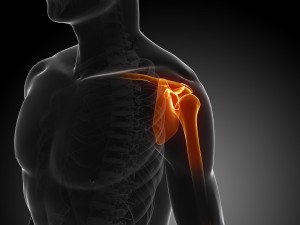Physio Health Advice > Shoulder Impingement
What is Shoulder Impingement?
Shoulder impingement is a very common shoulder condition, also called painful arc syndrome, supraspinatus syndrome, swimmer’s shoulder and thrower’s shoulder, it is due to mechanical compression and irritation of the soft tissues around the shoulder joint. It occurs in people of all ages, and affects males and females equally. If the impinged tissues are not treated appropriately, they can become extremely painful and cause significant difficulty during day-to-day activity.
How does it happen?
Shoulder impingement occurs when the tendons or bursa in the shoulder are compressed against the humerus (upper arm bone) and the acromion process (a bony part of the top of the shoulder blade that protects the shoulder). This typically occurs in people who perform lots of repeated overhead activities. Some people also have bone and joint structures that put them at more risk than others in developing this condition, for example a curved or hooked acromion rather than a flat one.
Shoulder impingement is usually classified in two ways:
(1) Primary impingement – this usually happens in people over 40 years of age due to degeneration of the rotator cuff tendons, acromion process, and shoulder joint resulting in reduced space for soft tissues during shoulder movements; and, (2) Secondary impingement – typically seen in people aged 15 to 35 years old. In these cases, impingement is usually due to poor movement patterns and muscle imbalances that lead to impingement.
What are the signs and symptoms?
Pain located at the front or side of the shoulder during arm movements is the most common symptom of shoulder impingement. This pain typically occurs in an “arc” as a person lifts their arm. The start of the movement will be painless, becoming increasingly painful as the movement progresses and eventually is pain-free again. Pain with overhead reaching is a common complaint particularly in mid-range. The onset of pain is typically gradual with no known trauma.
Many people complain of difficulty with performing activities such as doing up buttons, zippers or getting a wallet from the back pocket. Patients will eventually avoid using the involved shoulder, which then leads to muscle weakness. Loss of movement will also develop due to pain. Pain may also interfere with sleep, particularly when rolling onto the involved shoulder.
How can physiotherapy help?
The primary goal of physiotherapy will first be to reduce pain before eventually restoring function and strength to the shoulder. Your physiotherapist will achieve this through stretching exercises, retraining of movement patterns, muscle releases, taping and resistance exercises. As the level of pain starts to decrease, strengthening exercises will be increased to allow your shoulder to function at its optimal level.
An important part of physiotherapy treatment is also education, which allows you to avoid a re-occurrence of shoulder impingement in the future. For patients who don’t respond to physiotherapy, cortisone injection or surgery are options to explore.
If you would like to speak to a physiotherapist, click here to book an appointment.


